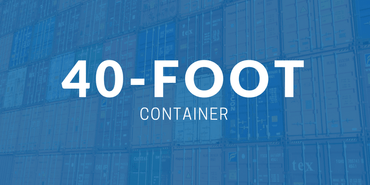
How to load a container



Customs clearance, paperwork, preparing your packing list and the Bill of Lading are important parts of the ocean freight process. So is the proper labeling of your goods and loading of a container. As a shipper, you are responsible for packing or loading a container.
Here are the most important things to look out for when loading a container.
Container seal
Misconceptions about the container seal and the seal number happen more than you think. The seal is the shippers’ responsibility. You can get your trucker or the shipping line to supply the seal, but it’s ultimately up to shippers to ensure that the seal number is noted correctly on all applicable documents.
An incorrect seal number can cause problems with customs clearance at destination. This, in turn, may result in extra charges, including delay fees. A good idea is to ensure you write down the seal number and take a picture of it. When done, advice your freight forwarder of the seal number and make sure it gets listed correctly on the B/L. In the event that the numbers don’t match, contact your shipping line immediately and advise them of the situation.
Time
Timewise, there are a lot of factors that come into play when scheduling a loading date and time. Certain things to keep in mind include the distance to the port. When a driver picks up the container, he should make sure that he can make it back to the port before it closes and make the load time. If not, you may incur extra charges for having to store the container overnight and for extra days of chassis usage and also possibly for extra dray from the truckers yard to the port.
Weight
Ensure that the weight of your cargo is evenly distributed over the floor area of your container. In the event that your cargo weight is unevenly concentrated, make sure to spread the weight out with bedding on the container floor. A container that is heavy in one end and light on the other can run into weight issues if the weight is too high on one axle. It also makes it harder to handle at the port and can sometimes even be dangerous.
Take note as to not to exceed the maximum container payload. Typically, the maximum gross mass of a container is 24,000kg (52,900lbs) for a 20-foot dry container and 30,480kg (67,200lbs) for a 40-foot dry container.
You can find each container’s weight capacity stated on the right door. But note that this weight limit is usually much higher than the weight limit allowed on the road. That said, if you’re loading a heavy container, make sure to check local regulations.
Capacity
When choosing FCL shipping, it’s recommended to use the entire space of the container. That means from corner to corner and wall to wall. If you don’t have enough cargo to cover, fill the empty spaces with dunnage.
As with weight, you also want to spread your goods out evenly. Do not have your cargo stacked up all the way to the top in the back half of the container and have them all spread out on the floor in the front half. When in doubt, think Tetris!
Cargo packing
Nearly all cargo damages in a full container result from insufficient packaging or incorrect stowage. Stowage is not just about putting as much cargo in there as possible. It’s important to distribute the weight correctly.
Certain factors to consider include the weight, size, and type of cargo. As a guideline, do not place wet goods above dry cargo as you run the risk of ruining your dry cargo. Also do not place heavy items on lighter cargo to prevent crushing.
Safely secure your cargo by packing your container as tightly as possible. If using dunnage, all blocking, bracing and packing material need to be heat treated in compliance with the destination country’s regulations. You can also use straps to tie the cargo down in place. Take note to not put direct pressure on the container door. If required, use a fence or gate to avoid pressure.
Related Articles


